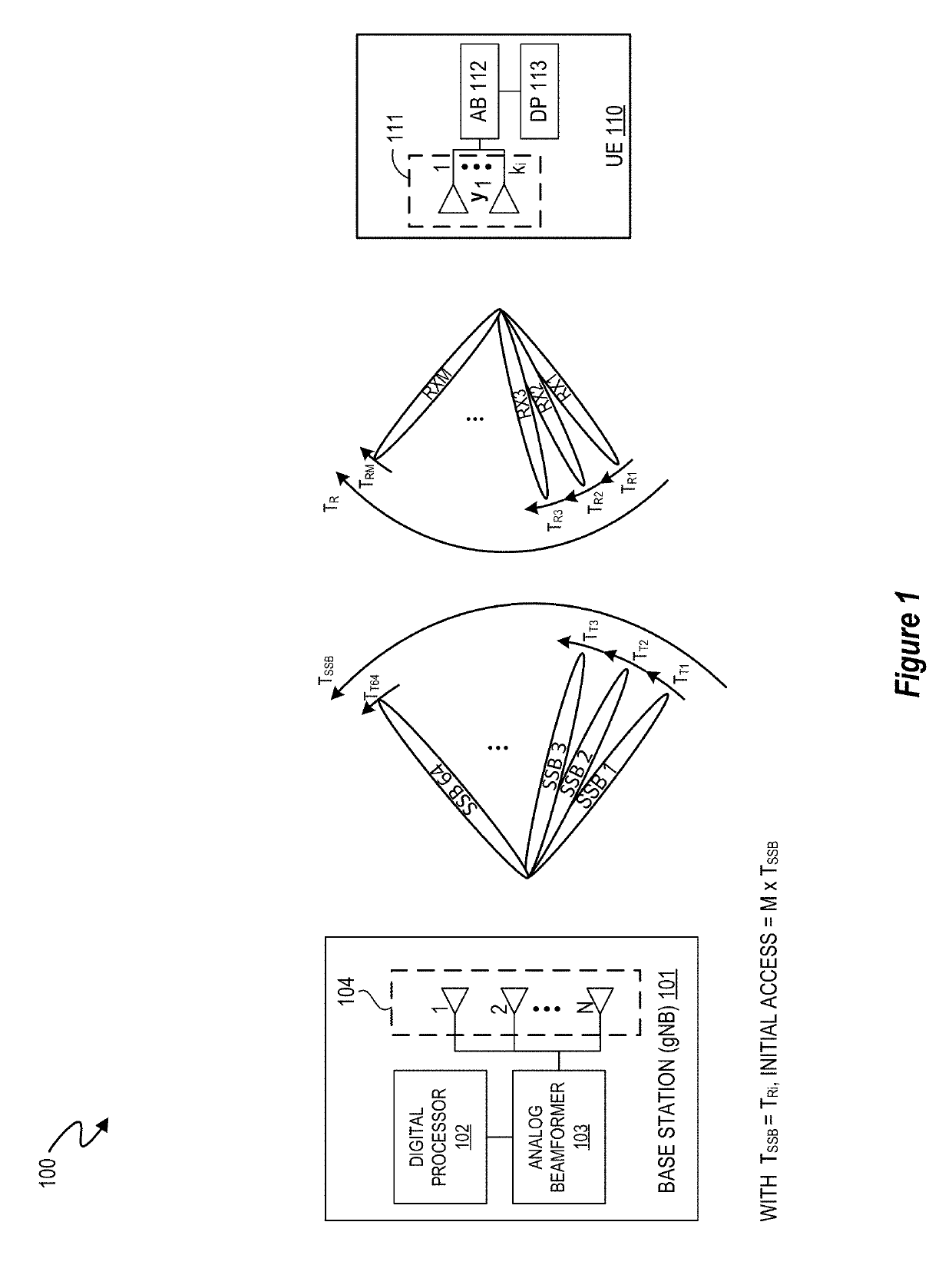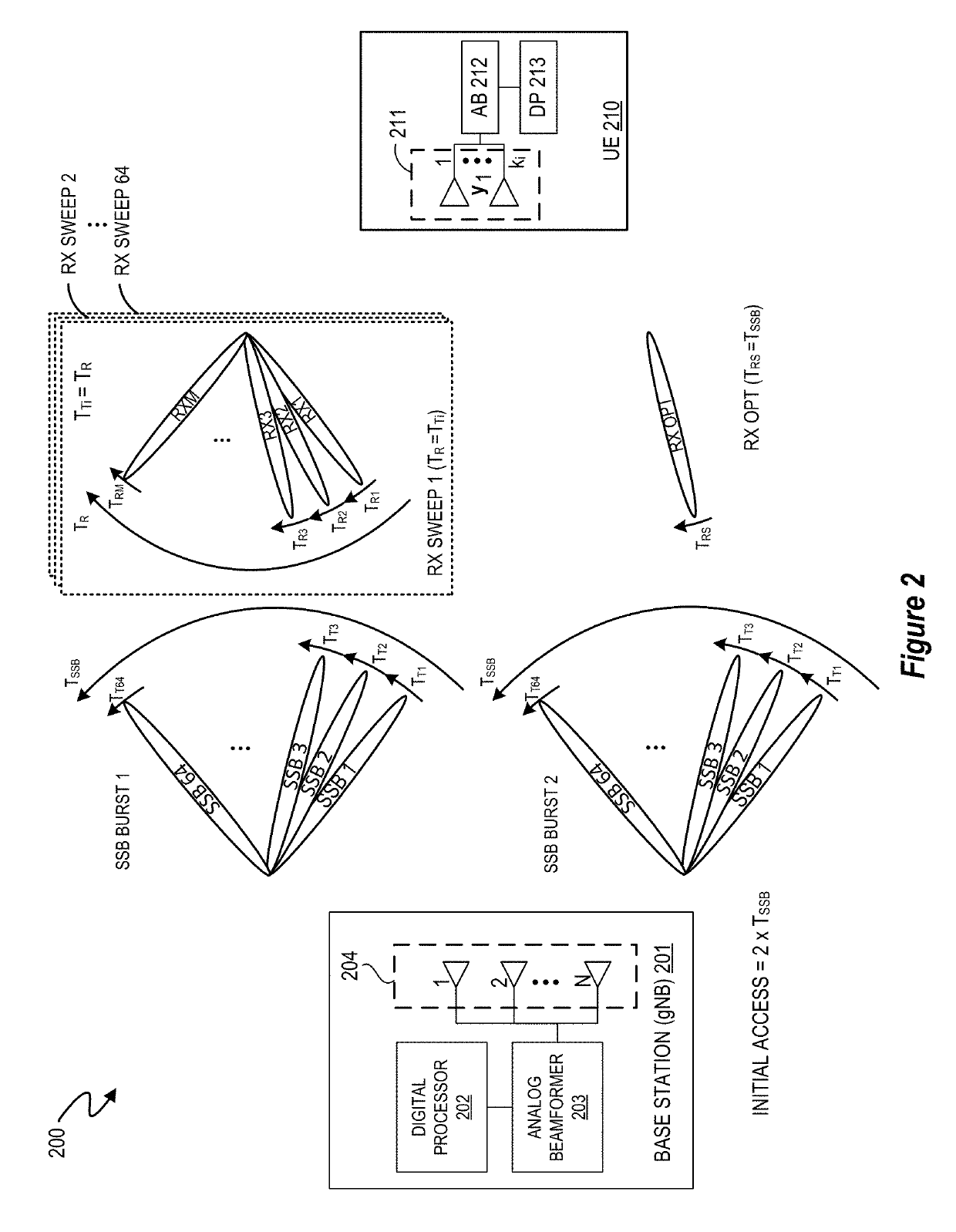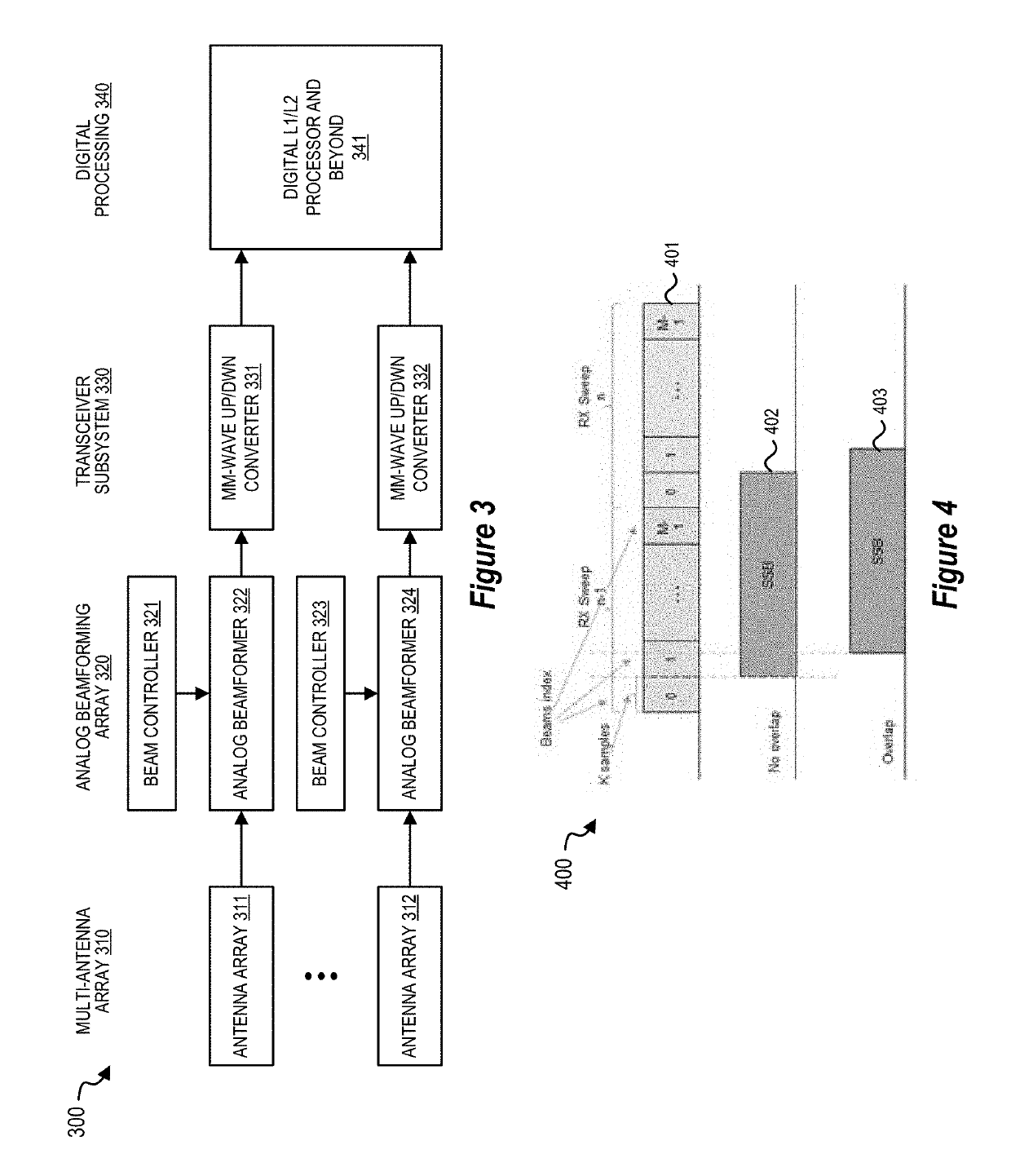Method and apparatus for fast and robust cell search for 5G and millimeter-wave wireless communication systems
- Summary
- Abstract
- Description
- Claims
- Application Information
AI Technical Summary
Benefits of technology
Problems solved by technology
Method used
Image
Examples
Embodiment Construction
[0012]An apparatus, system, architecture, methodology, and program code are described for accurately and efficiently performing a cell search at the user equipment side (UE) for next generation mm-wave cellular systems, including but not limited to 5G New Radio (5G-NR). In selected embodiments, a two-step approach is disclosed for achieving maximum robustness (coverage) that selectively enables the use of receive (RX) beams with maximum selectivity while achieving significantly reduced acquisition times by continuously performing a periodic RX beam sweep at the UE. In the first step, the UE sweeps through all of its RX beams during each transmit TX beam in a manner such that the UE can calculate a received signal strength indicator (RSSI) value (or some such metric based on received power or energy) for each RX beam to identify the best RX beam(s) (e.g., the RX beam(s) having the maximum power based on the calculated RSSI value) for the synchronization signal blocks (SSB) transmitte...
PUM
 Login to view more
Login to view more Abstract
Description
Claims
Application Information
 Login to view more
Login to view more - R&D Engineer
- R&D Manager
- IP Professional
- Industry Leading Data Capabilities
- Powerful AI technology
- Patent DNA Extraction
Browse by: Latest US Patents, China's latest patents, Technical Efficacy Thesaurus, Application Domain, Technology Topic.
© 2024 PatSnap. All rights reserved.Legal|Privacy policy|Modern Slavery Act Transparency Statement|Sitemap



